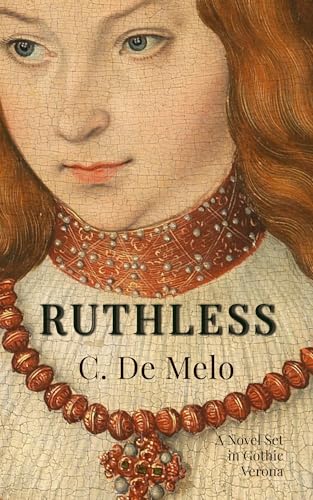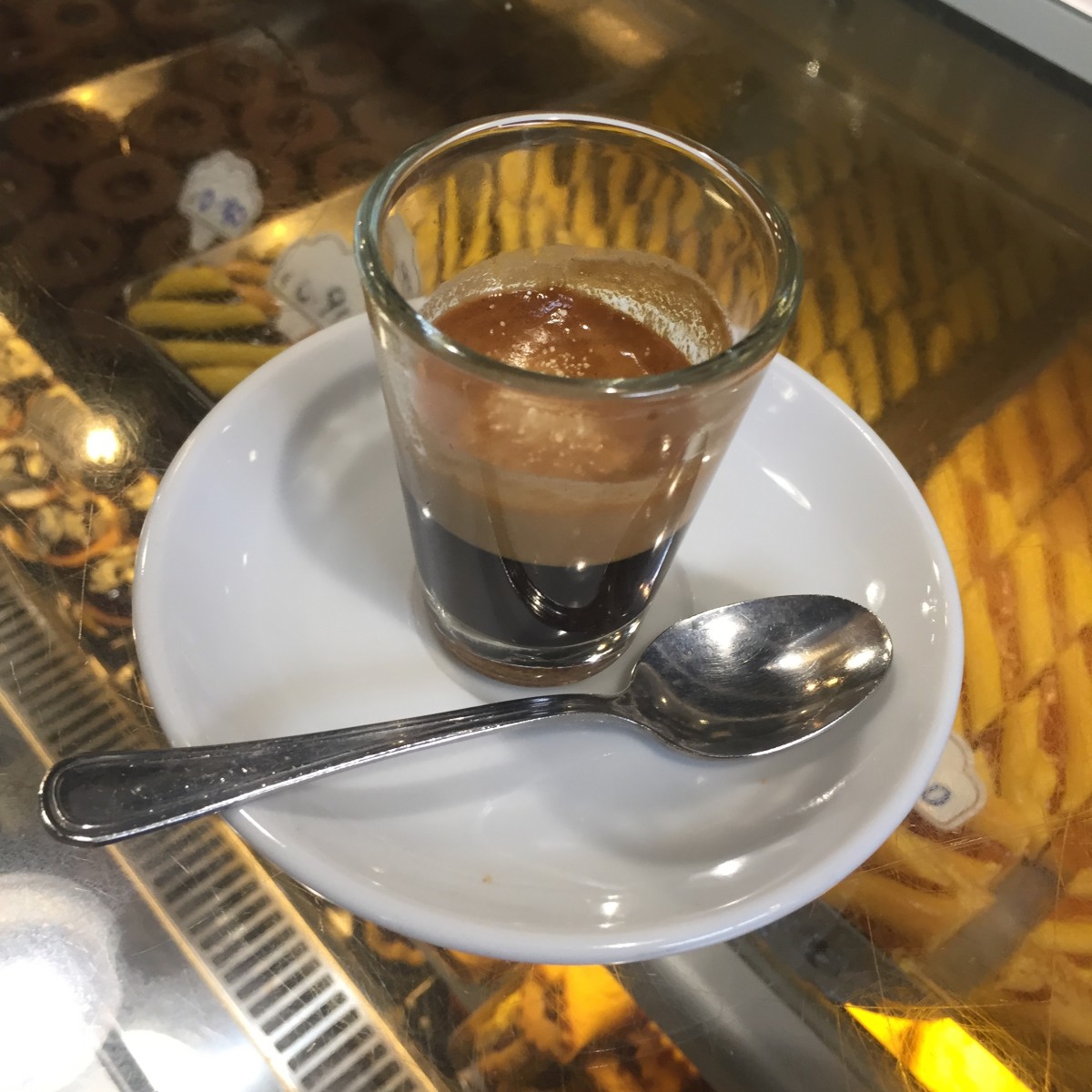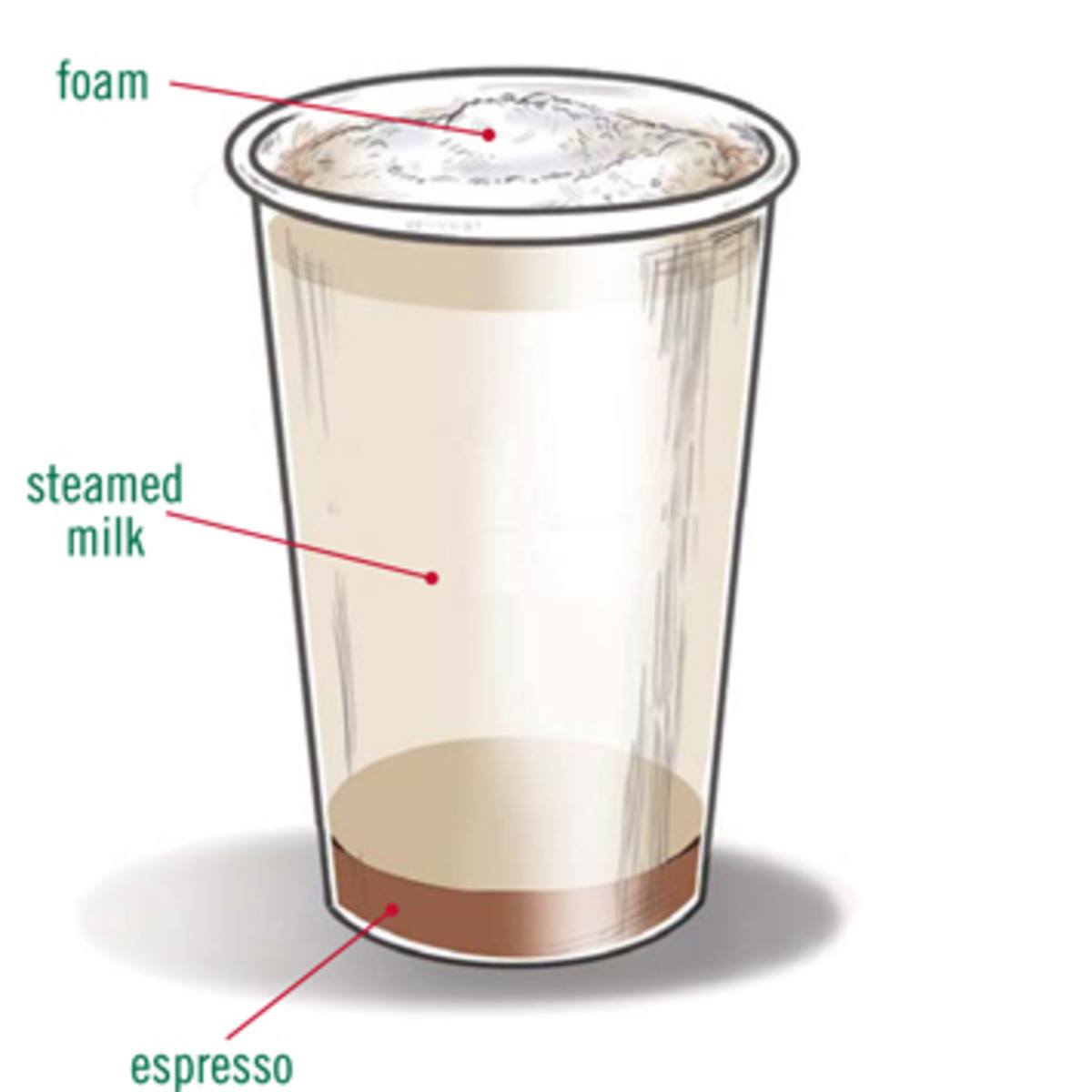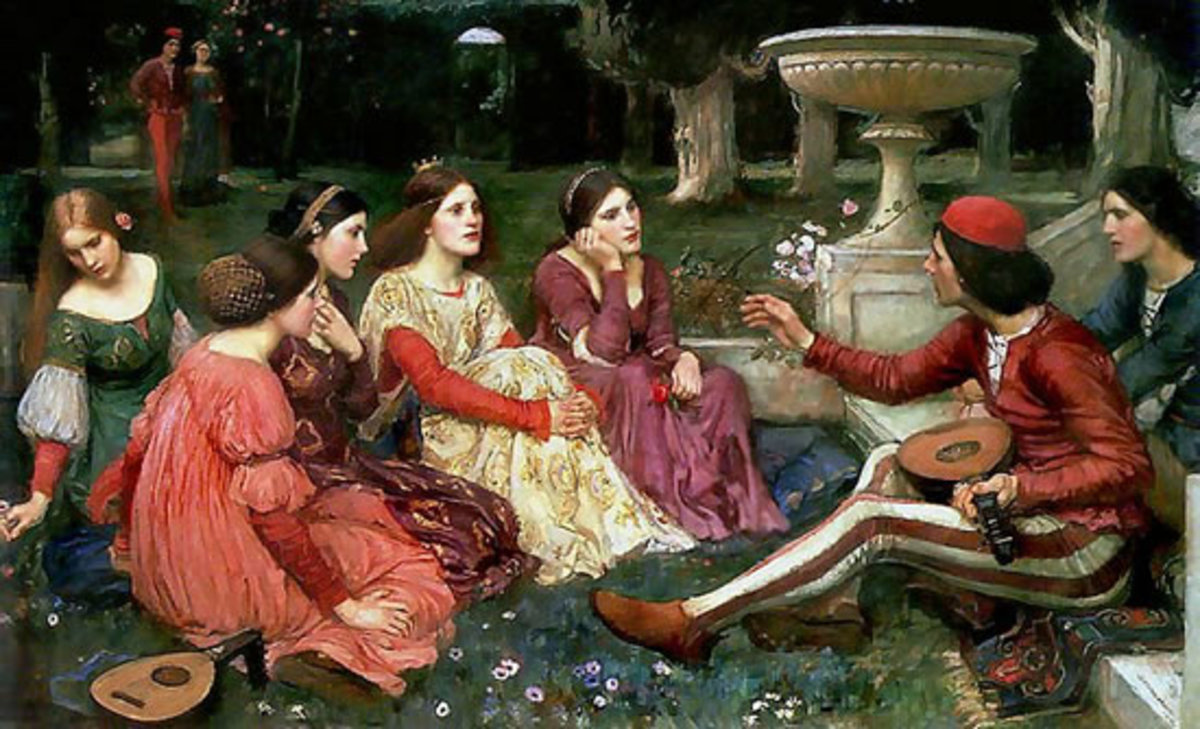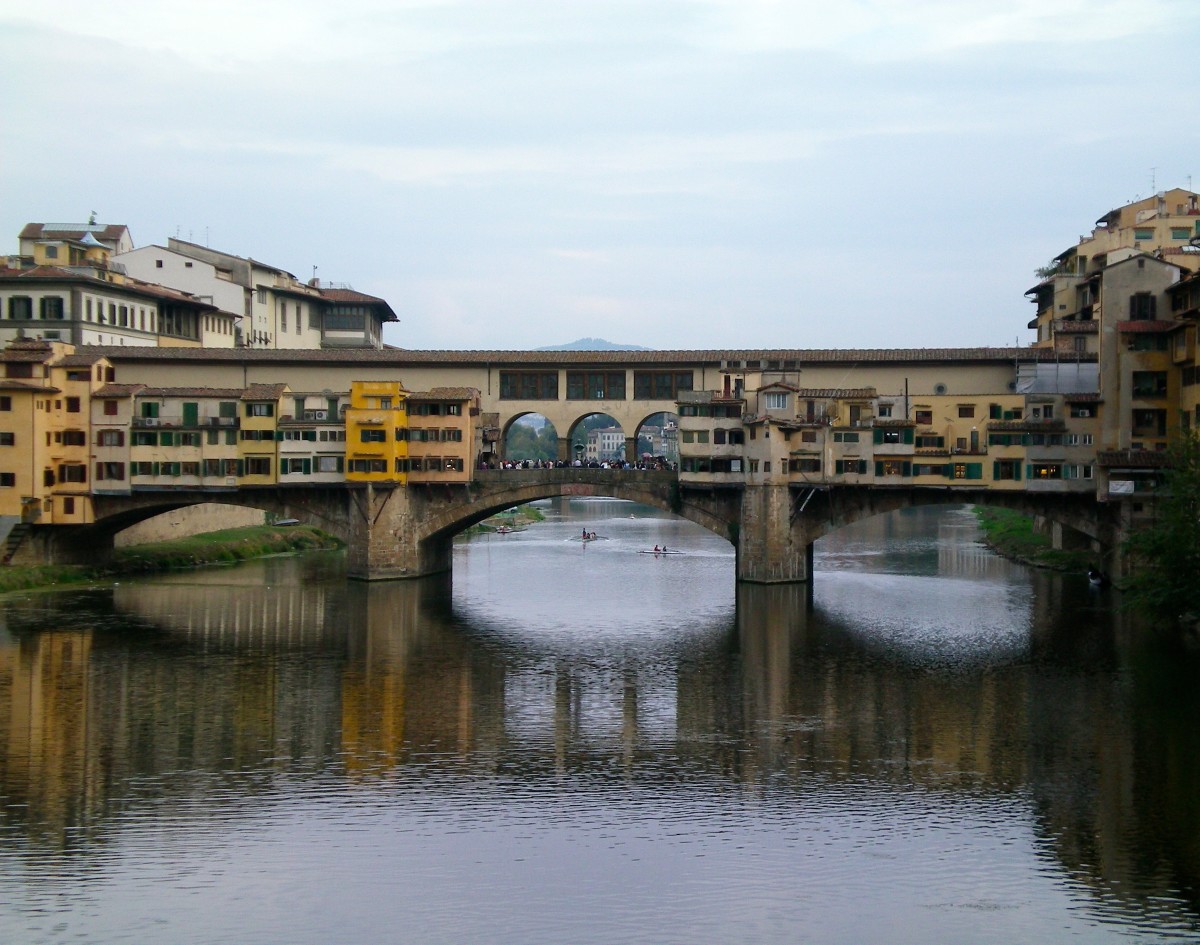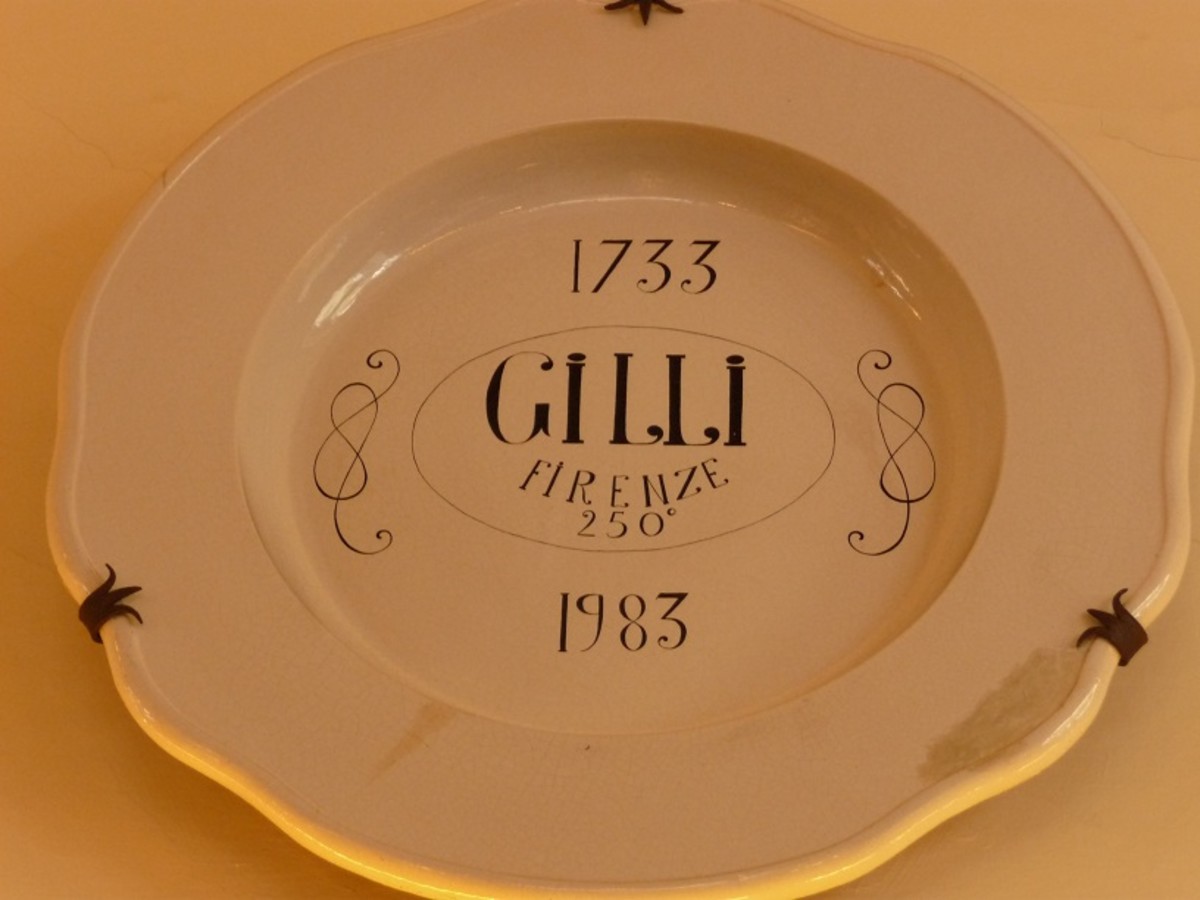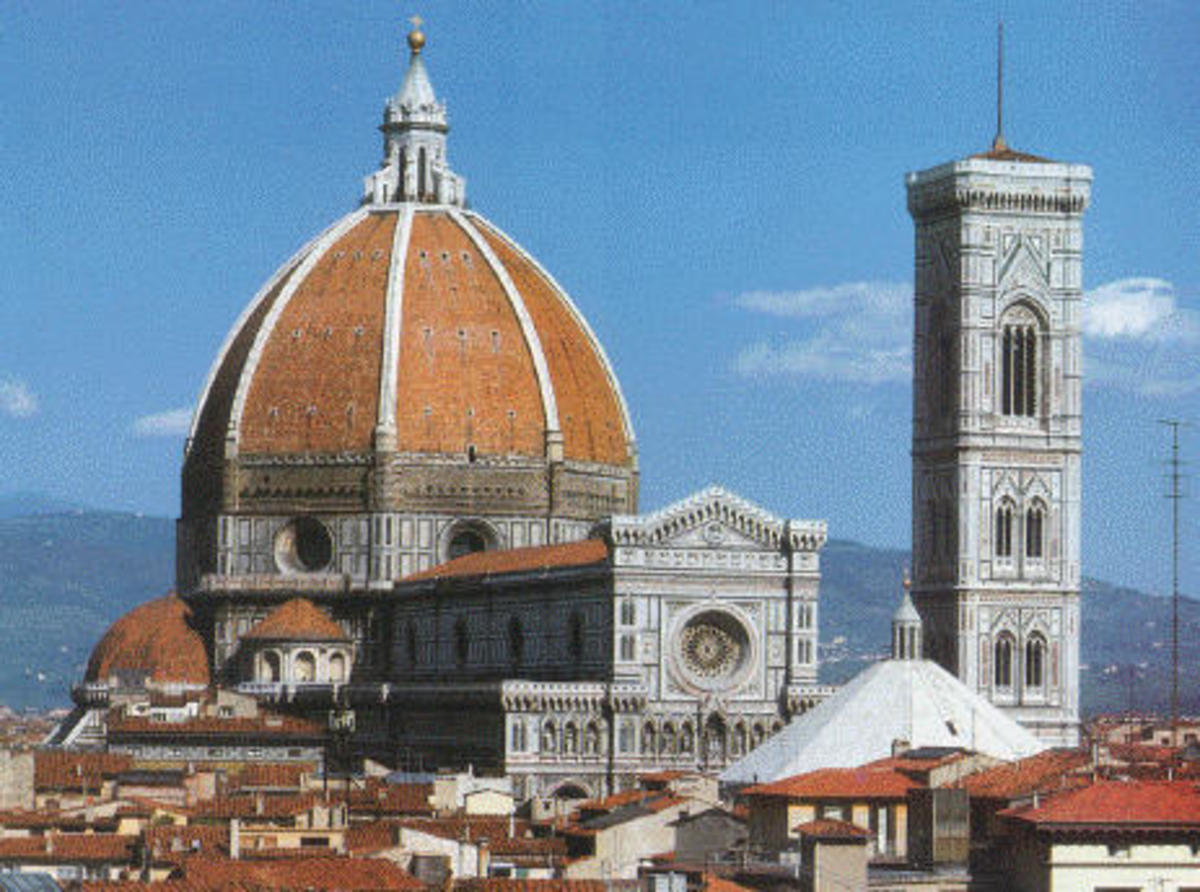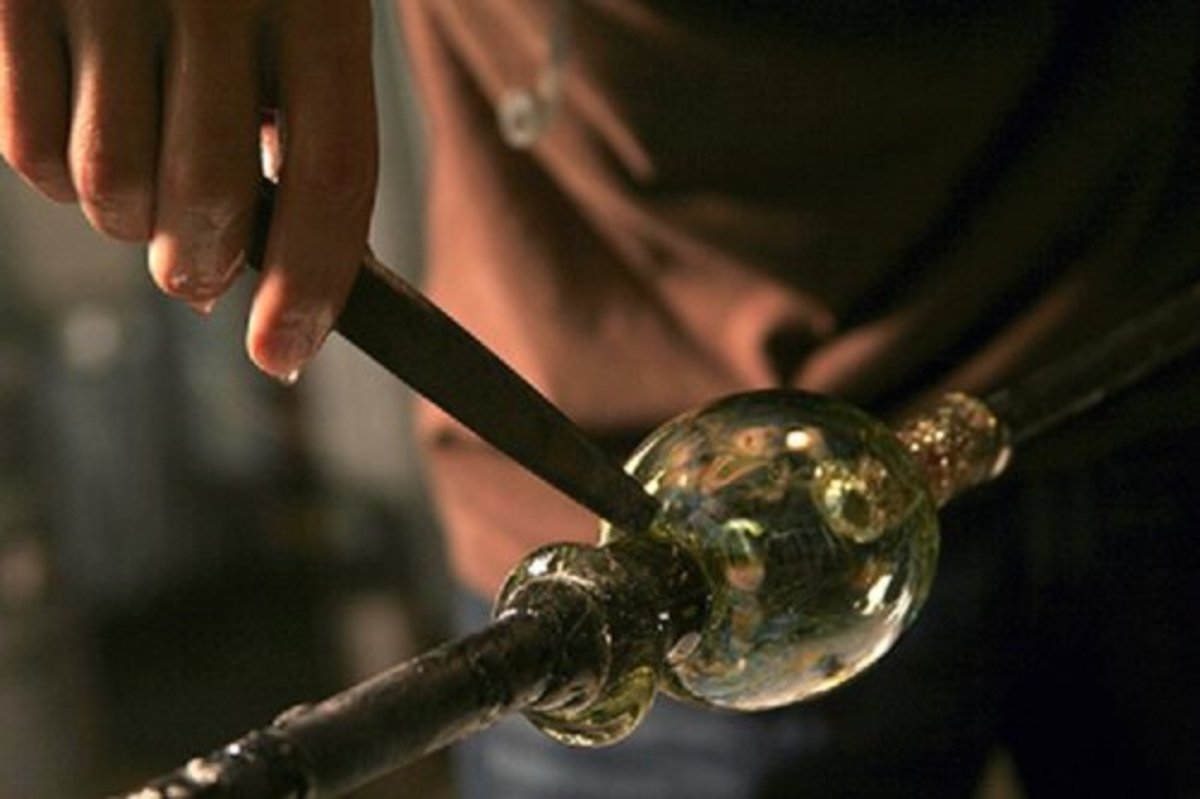Florence, Italy: COFFEE- Where to Go & What to Order!
Caffe Chiaroscuro = Coffee Heaven!
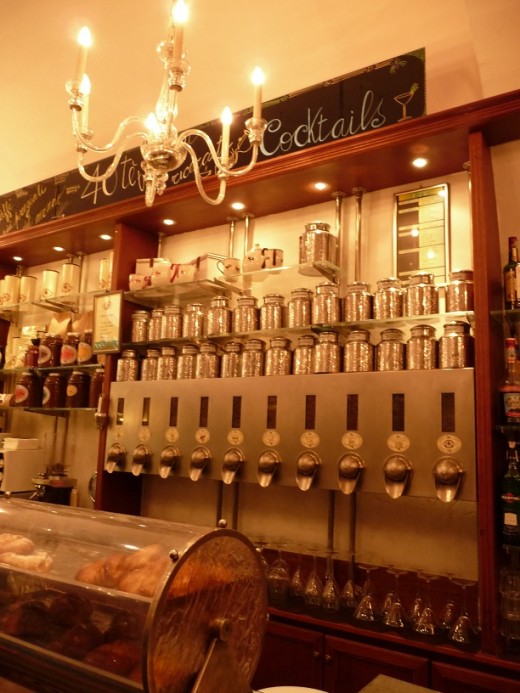
"Un Coffee Americano Per Favore!"
Locals cringe when they hear a tourist ask for this item in an Italian coffee bar. Since most Italians do not use slow-drip coffee pots, which are so popular in North America, many coffee bars just dump a shot of espresso into a cup of boiling water to make the "Caffe Americano." If you're ordering this item because you think it contains less caffeine, think again.
Espresso is all about flavor, so an abundant amount of coffee is used for each small cup. The scalding water passes through the coffee grounds quickly, resulting in robust taste with low level caffeine. The slow drip method of typical coffee-makers allows for more caffeine and less flavor. This is why people can drink several espressos a day and not get "the shakes."
Coffee is one of the world's top export products, and most of it is grown in South America, Africa, and Asia. The coffee beans are then roasted in various ways, which changes the taste of the beverage itself. Darker roasts tend to be bolder while lighter roasts are more complex- again, this is a matter of personal taste. Here in Italy, coffee is consumed in pure form (without artificial flavors, whipped cream or fancy syrups), so it MUST be of the highest quality.
Discover the Florence ruled by the Medici in this stunning novel.
Macchiato & Espresso
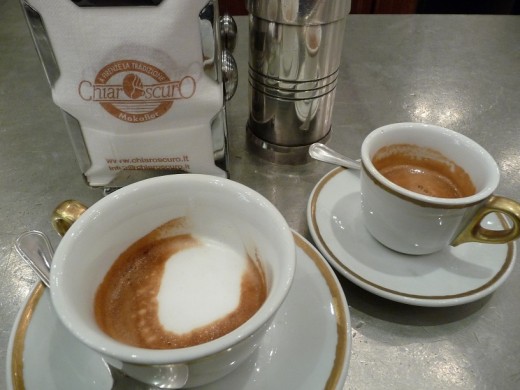
What to order in Italy
The four most common ways to consume coffee in Italy are:
1. Espresso- a shot of black coffee in a small cup
2. Macchiato- an espresso with a dollop of frothy, hot milk
3. Cappuccino- an espresso with more frothy, hot milk in a normal cup
4. Latte Macchiato- a tall glass of boiled milk with a shot of espresso added
Note: Cappuccino and Latte Macchiato are only to be consumed in the morning and never after lunch or dinner. These are considered breakfast beverages, and to drink them after a main meal is a culinary faux-pas. Not only do most Italians find it revolting to drink hot milk after consuming meat, vegetables and wine, they also believe doing so will interfere with digestion. Try an espresso or macchiato (or limoncello or grappa) instead!
Of course you can visit any of the elegant and historical coffee houses in the city for excellent coffee, but you don't really need to look that far. Here in Italy, the simple neighborhood bar on the corner also serves wonderful coffee.
The following caffe bars are where my husband and I usually go for coffee.
One of the most well-known coffee bars in the city is Chiaroscuro, which also offers a nice aperitivo in the evenings. When I first entered this coffee bar several years ago with some friends, I was totally impressed by all the different varieties of coffee on display. There is always a new and exotic blend to try, and it is usually advertised on a sheet of paper behind the counter. The coffee may be consumed right then and there or freshly ground, placed in a bag to go. If you are a true coffee-lover, Chiaroscuro offers a "Coffee Course" and you may want to take advantage of that during your visit to Florence.
Moyo is known as an aperitivo bar where people drink and hang out at night. In the morning, Moyo offers fresh pastries and really good coffee. I had a macchiato there with a friend recently and I was so pleasantly surprised that I have gone back several times. It's good enough for me to mention it in this article, so try it out if you are in the S. Croce neighborhood.
Caffe Sant' Ambrogio is another good coffee bar with a lot of character. Local Florentines gather round to discuss all kinds of things while sipping rich, dark espresso. They also offer a lively aperitivo in the evening where lots of people pour out into the S. Ambrogio piazza to mingle and socialize.
One important thing to keep in mind when going out for coffee is that the price differs depending on whether you sit or stand. If the bar offers seating, always clarify first with the barista if there is an extra charge to sit down. Some places have seating without table service, so there is no extra charge- you just have to carry your own coffee to the table.
Finally, if you really want to feel like a local, pay it forward. It's a custom in Italy to pay for an extra coffee. The money from these "extra coffees" will then be used later in the day to provide food or beverages to those in need (like the homeless, for example). Don't be compelled to do this each time, however. If you happen to be carrying too much change and wish to lighten your purse, being charitable is a good option. As always, thank you for reading!
C. De Melo
www.cdemelo.com


